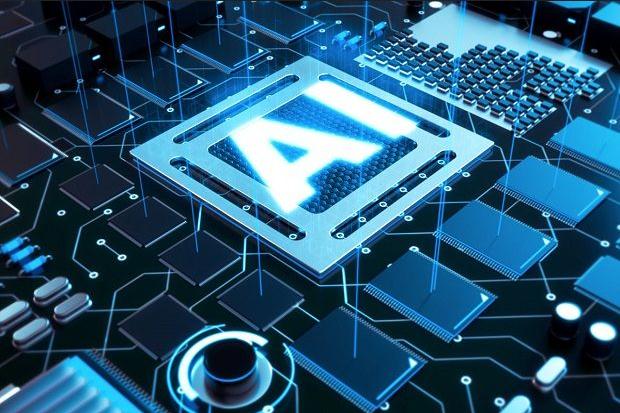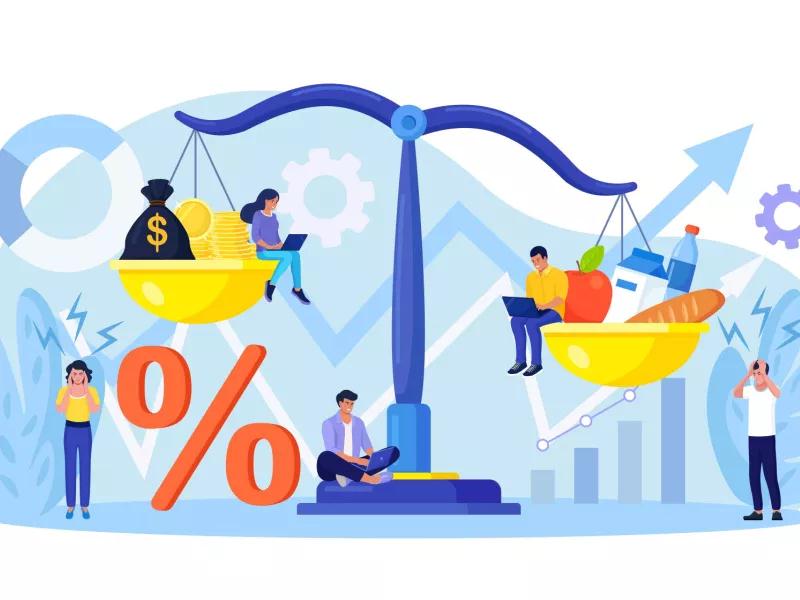Artificial Intelligence (AI), which today is defined as one of the most notable advances of the Fourth Industrial Revolution, is the simulation of human intelligence processes through machines, especially computer systems. These processes include learning (the acquisition of information and rules using the information), reasoning (using the rules to make approximations or reach conclusions), and self-correction. Particular applications of artificial intelligence include specialized systems, voice recognition and intelligent vision.
Artificial Intelligence (AI) can be categorized as weak or strong. A weak AI, also known as a small AI, is an AI system that is designed and trained to perform a particular task. Personal virtual assistants, such as Apple’s Siri, are a form of weak AI. Strong AI systems, also known as general artificial intelligence systems, are AI systems with general and cognitive abilities typical of humans. When presented with an unknown task, a strong AI system is capable of finding a solution without human intervention.
Due to hardware, programming and design, the costs of AI systems can be high, many vendors are including AI components in their standard offerings, as well as access platforms for artificial intelligence as a service (AIaaS). acronym in English). AI as a service allows individuals and companies to experiment with AI for various business purposes and evaluate multiple platforms before the customer decides on one. Popular cloud AI offerings include: Amazon AI services, IBM Watson Assistant, Microsoft Cognitive Services, and Google AI services.
While AI tools present a new range of functionalities for businesses, the use of artificial intelligence presents ethical questions. This is due to the use of deep learning algorithms, which feature many of the most sophisticated AI tools, they are only as intelligent depending on the information they receive in the training process. Because humans select the information that should be used to train an AI program, the potential for human bias is inherent and should be closely monitored.
Some industry experts believe that the term Artificial Intelligence is greatly distorted by popular culture, causing the general public to have unrealistic fears about artificial intelligence and improbable expectations about how the technology will transform workplaces and life in general. . Researchers and marketers hope that the label augmented intelligence, which has a more neutral connotation, will help understand that AIs will simply improve products and services, not replace the humans who use them.
Types of artificial intelligence
Arend Hintze, an assistant professor of integrated biology and computer science and an engineer at Michigan State University, categorizes AI into four types, from the types of AI systems that exist today to sentient systems, which still exist. they do not exist.
Its categories are the following:
Type 1: Reactive machines. An example is Deep Blue, the IBM chess program that beat Garry Kasparov in the 90s. Deep Blue can identify pieces on the chessboard and make predictions, but it has no memory and cannot use past experiences to inform future decisions. Analyze possible moves, your own and those of your opponent – and choose the most strategic one. Deep Blue and Google’s AlphaGO were designed for specific purposes and cannot be easily adapted to other situations.
Type 2: Limited Memory: These AI systems can use past experiences to inform future decisions. Some of the decision-making functions in autonomous vehicles are designed this way. Observations inform actions that may occur in the non-distant future, such as changing routes. These observations are not stored permanently.
Type 3: Theory of mind: This psychology term refers to the understanding that others have about their own beliefs, desires and intentions, and that impacts the decisions they make. This type of AI does not exist yet.
Type 4: Self-awareness: In this category, AI systems have a sense of themselves, they have consciousness. Self-aware machines understand their current state and can use the information to infer what others are feeling. This type of AI does not exist yet.
Examples of technologies with AI:
Artificial Intelligence is embedded within a variety of different types of technology. Here we present seven examples:
Automation: It is what causes a system or a function to be processed automatically. For example, robotic automation processes can be programmed to perform a high volume of repeatable tasks that humans typically perform. Robotic automation processes differ from technological automation in that they can adapt to changing circumstances.
Learning machines: The science of getting a computer to act without programming it. Deep learning is a subset of machine learning that, in fairly simple terms, can be thought of as the automation of predictive analytics. There are three types of machine learning algorithms:
- Supervised learning: Data sets are labeled so that models can be detected and the labels used for new data sets.
- Unsupervised learning: Data sets are not labeled and are organized according to their similarities or differences.
- Reinforcement learning: The information is not labeled, but after performing an action or several actions, the AI system obtains feedback.
Machine vision: It is the science that allows computers to see. This technology captures and analyzes visual information using a camera, digital and analog conversion, and digital signal processing. It is often compared to human vision, but machine vision is not limited by machines and can be programmed to see through walls, for example. It is used in a range of applications, from signature identification to medical image analysis. Computer vision, which is focused on image processing by machines, is frequently combined with machine vision.
Natural language processing: It is the processing of human – and non-computational – language through a computer program. One of the best known examples of this type of technology is spam detection, in which you look for a specific line and from the text of an email, then the program decides that it is spam. Current approaches to natural language processing are based on machine learning. Natural language processing can include translation, sentiment analysis, and speech recognition.
Robotics: It is a field of engineering focused on the design and manufacturing of robots. Robots are frequently used to perform tasks that are difficult for humans or to perform tasks consistently and repetitively. They are used for vehicle assembly lines or by NASA to move large objects in space. Researchers are also using machine learning to build robots that can engage socially.
Self-driving cars: This technology uses a combination of computer vision, image recognition and deep learning to build an automated ability to drive a vehicle while it is on a specific route and to avoid unexpected obstructions, such as passersby.
Applications of Artificial Intelligence
Artificial intelligence has made inroads in a number of areas. Here we have six examples:
AI in healthcare: The biggest bets are on improving patient outcomes and reducing costs for healthcare systems. Companies are applying machine learning to make diagnoses faster than humans can. One of the most well-known healthcare technologies is IBM Watson. Understands human language and is able to answer questions. The system sifts through patient information and other available information sources to formulate a hypothesis, which it then presents with a reliable scoring scheme. Other applications of AI include chatbots, a computer program that is used to answer online questions and assist customers, help schedule follow-up appointments or assist patients in their billing process, and virtual healthcare assistants. that provide basic feedback on health issues.
AI in business: Robotic process automation is being applied to highly repetitive tasks usually performed by humans. Machine learning algorithms are being integrated into customer relationship management and analytics platforms to uncover insights on how to better serve customers. Chatbots have been incorporated into websites to provide immediate service to customers. The automation of work positions has also become a topic of discussion among academics and information technology analysts.
AI in education: AI can automate school processes, giving educators more time. AI can assess students and adapt to their needs, helping them work at their own pace. AI tutors can provide additional support to students, ensuring they stay on the learning path. AI can transform the where and how of student learning, perhaps even replacing some teachers.
AI in finance: AI in personal finance applications, such as Mint or Turbo Tax, is disrupting financial institutions. Applications like these can collect personal information and provide financial advice services. Other programs such as IBM Watson have been applied in the home buying process. Today the software develops a large part of the trading on Wall Street.
AI in laws and law: The process of discovery, searching within different documents, in law is often overwhelming for human beings. Automating these types of processes guarantees a much more efficient use of time. Startups are also building assistants that can answer questions and be programmed to answer questions quickly by examining the taxonomy and ontology associated with a database.
AI in manufacturing: This has been an area that has been at the forefront in the incorporation of robots in the work process. Industrial robots are used to perform tasks of a single type, but as technology advances, these types of tasks can become more sophisticated.
Ethical and safety concerns
The application of AI in the realm of self-driving cars raises ethical and safety concerns. Cars can be hacked, and when an autonomous vehicle is involved in an accident, liability is unclear. Autonomous vehicles can also be put in a position where an accident is inevitable, forcing programming to make ethical decisions about how to minimize damage.
Other major concerns are the potential abuse of AI tools. Hackers are beginning to use sophisticated machine learning tools to gain access to key systems, complicating security issues beyond their current state.
Audio and video generation tools based on deep learning can be useful for dark actors who would then have the necessary tools to promote highly convincing fake news where, through videos, public figures are observed saying and doing things that never took place.
Regulation of Artificial Intelligence technology
Despite all these potential risks, there are few regulations governing AI tools, and where laws exist, they typically refer to AI indirectly. For example, federal lending regulations require financial institutions to explain credit decisions to potential customers, which can limit the extent to which lenders can use deep learning algorithms, which by their nature can be opaque. . The European General Data Protection Regulation (GDPR) places strict limits on how companies can use customer data, which prevents the development of many functionalities of AI applications that deal directly with the clients.
In 2016, the US National Science and Technology Council issued a report examining the potential role that government regulation can play in the development of AI, but did not recommend that any specific legislation be considered. Since that time the issue has received little attention from legislators.
Impact of AI on the economy
The development of AI can have a great impact on the economy.
First: generating new jobs that did not exist and that require complex programming skills to meet the needs and demand of companies that are beginning to acquire this type of technological tools.
Second: The automation of processes makes the time spent on a productive task in any area much less, therefore, the productivity of nations and companies that acquire and implement this type of technologies is improved.
Third: Some jobs may end up being displaced by the development of AI tools that are capable of performing repetitive tasks that were previously reserved for human labor. Jobs such as taxi drivers or call center assistants could disappear due to the arrival of self-driving cars and chatbots.
Given the possible economic impacts of AI, it is necessary to invest in the training of the workforce and its retraining, in cases where jobs may be lost, so that workers and entrepreneurs adapt to the future of the labor market where AI will be omnipresent. Governments would do well to invest in these types of technologies to optimize their processes and improve their practices.
Facial and image recognition can be a useful tool to improve political stability, reducing crime and offenses, but it can also be useful to states and governments that tend to repress the free expression of their citizens, which is why it is required that the application of AI is done with ethical criteria, taking advantage of its multiple advantages to confront serious economic problems such as corruption and the inefficient use of resources.











